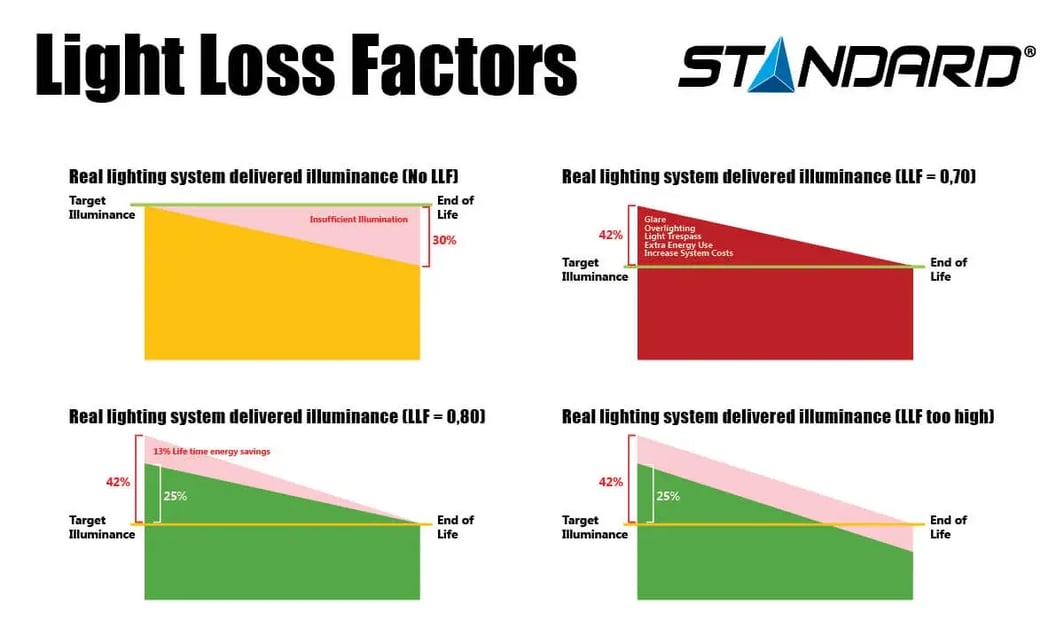Initial Lumens
All light sources fade over time. Indeed, light intensity diminishes and becomes inefficient over time, though it does not cease to function. When we first turn on a light, its luminosity is at its highest degree: this is called Initial Lumen. In the case of an LED light, we must wait 45 minutes after initial lighting to measure this level as the diodes need time to stabilise. In the case of an HID light, the measurement is calculated after 1,000 hours of use. This process is called Burn-In.Lumen Maintenance and L90/L70/L50 Documents
Lumen maintenance is linked to the life span of a lamp or a luminary. In fact, an LED never ceases to function. However, in theory, it is everlasting, so long as there is an electrical current to feed it. The gradual fading of a light source’s intensity is what renders the lamp or luminaire obsolete. In the case of lighting products that use an LED system, we refer to technical documents known as L90, L70 and L50. These calculate the life span of a LED luminaire’s circuit board in hourly increments. We estimate the amount of light that the diodes produce when this luminaire diffuses 90% (L90), 70% (L70) or 50% (L50) of the quantity of initial lumens. A 70% deterioration corresponds to the stage at which the human eye registers a decline in the intensity of light. The human eye will only be inconvenienced when light intensity reaches a level of 30%. So, when we state that a luminaire has a 72,000-hour lumen maintenance schedule, it means that we can expect to notice a reduction of light intensity after 72,000 hours of use. However, this does not mean that the luminaire will cease to function.

